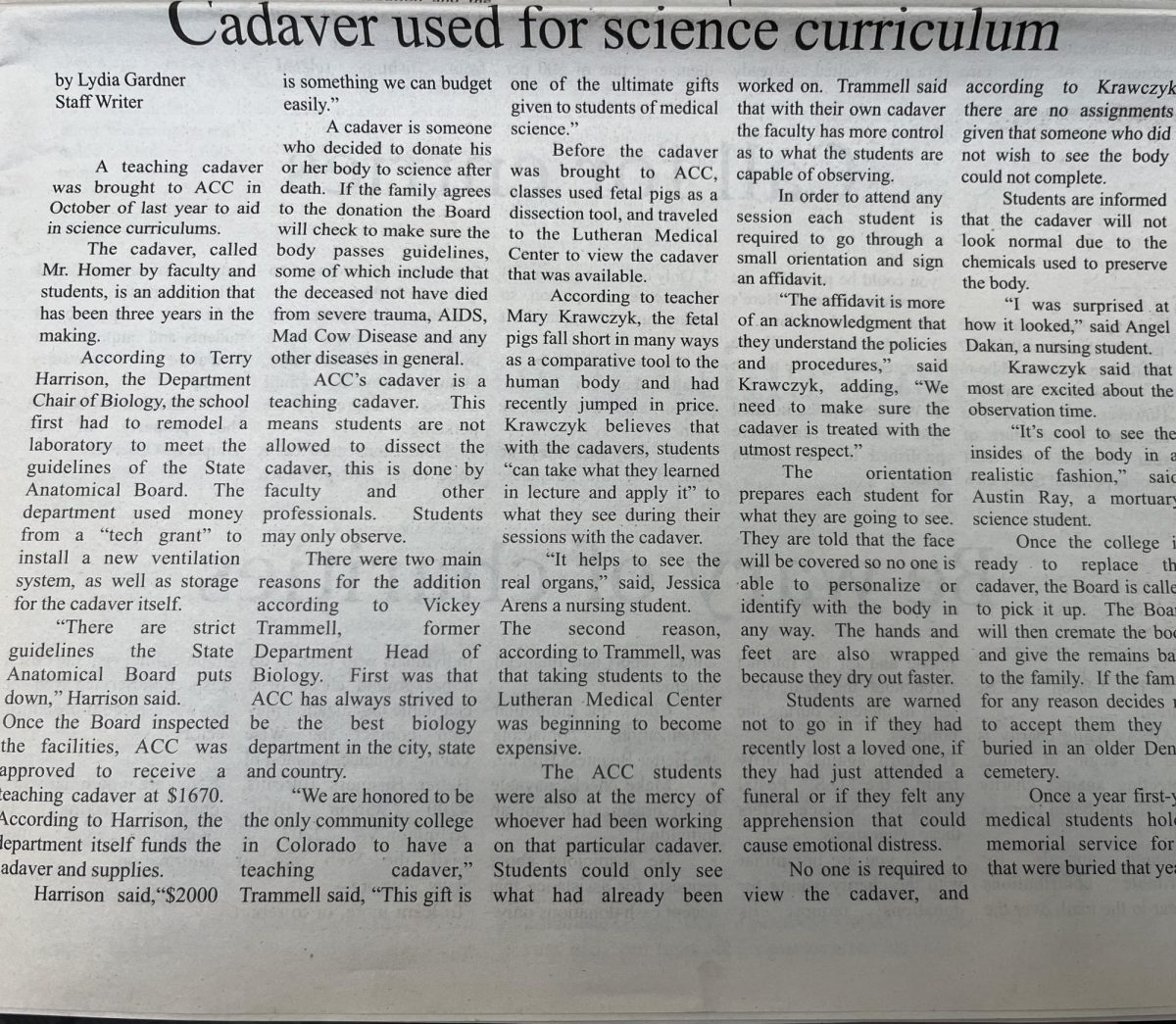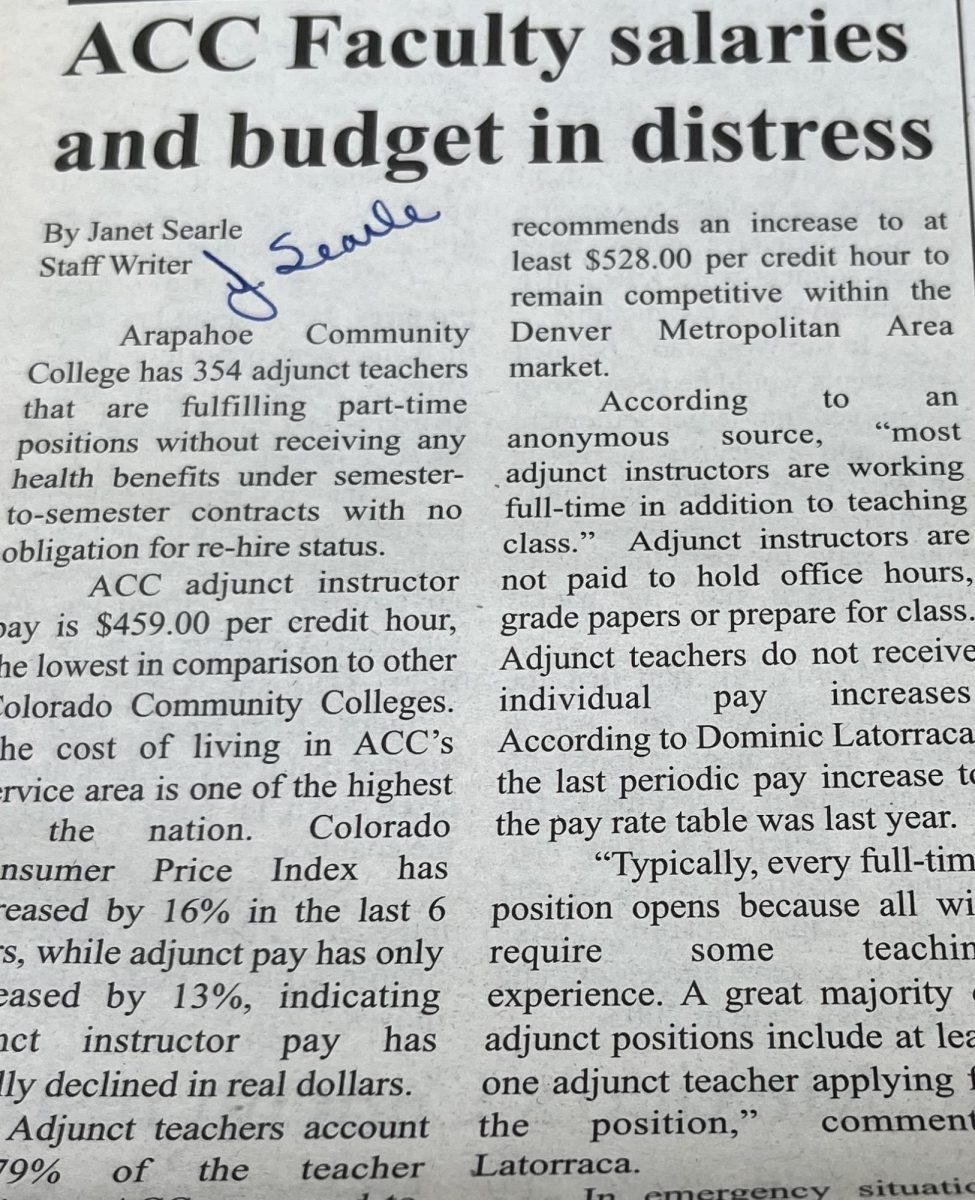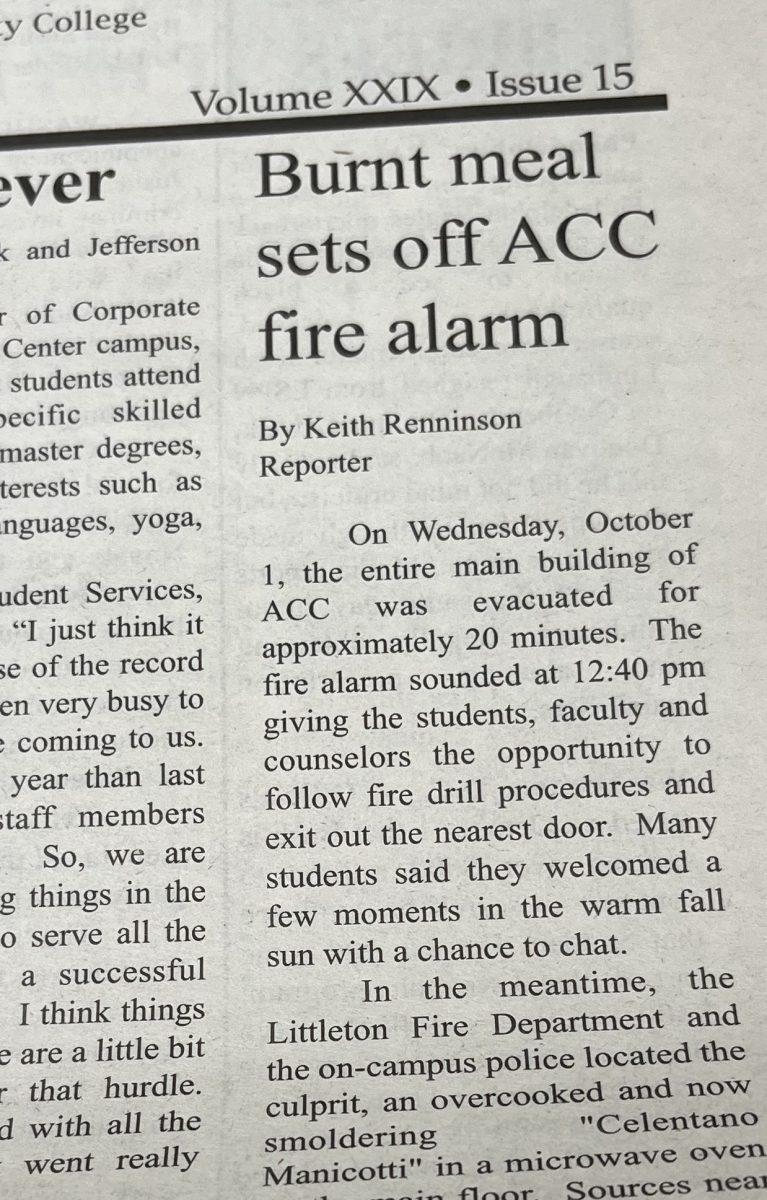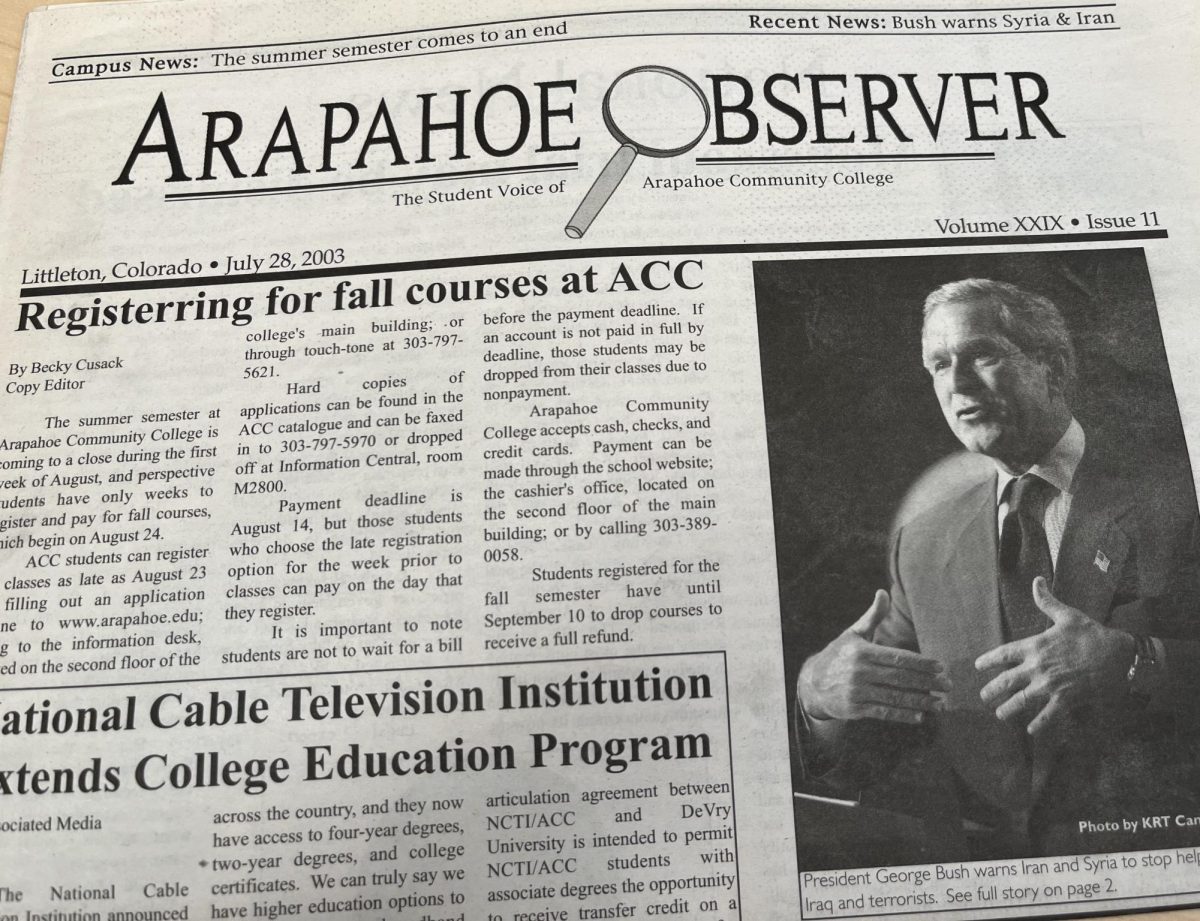Editor’s Note: This story originally ran Feb. 24, 2003 in the Arapahoe Observer, ACC’s student paper at the time. No part of the text has been changed, so some information may be outdated.
A teaching cadaver was brought to ACC in October of last year to aid in science curriculums.
The cadaver, called Mr. Homer by faculty and students, is an addition that has been three years in the making.
According to Terry Harrison, the Department Chair of Biology, the school first had to remodel a laboratory to meet the guidelines of the State Anatomical Board. The department used money from a “tech grant” to install a new ventilation system, as well as storage for the cadaver itself.
“There are strict guidelines the State Anatomical Board puts down,” Harrison said.
Once the Board inspected the facilities, ACC was approved to receive a teaching cadaver at $1670. According to Harrison, the department itself funds the cadaver and supplies.
Harrison said, “2000 is something we can budget easily.”
A cadaver is someone who decided to donate his or her body to science after death. If the family agrees to the donation the Board will check to make sure the body passes guidelines, some of which include that the deceased not have died from severe trauma, AIDS, Mad Cow Disease and any other diseases in general.
ACC’s cadaver is a teaching cadaver. This means students are not allowed to dissect the cadaver, this is done by faculty and other professionals. Students may only observe.
There were two main reasons for the addition according to Vickey Trammel, former Department Head of Biology. First was that ACC has always strived to be the best biology department in the city, state and country.
“We are honored to be the only community college in Colorado to have a teaching cadaver,” Trammell said, “This gift is one of the ultimate girts given to students of medical science.”
Before the cadaver was brought to ACC, classes used fetal pigs as a dissection tool, and traveled to the Lutheran Medical Center to view the cadaver that was available.
According to teacher Mary Krawczyk, the fetal pigs fall short in many ways as a comparative tool to the human body and had recently jumped in price. Krawczyk believes that with the cadavers, students “can take what they learned in lecture and apply it” to what they see during their sessions with the cadaver.
“It helps to see the real organs,” said, Jessica Arens a nursing student.
The second reason, according to Trammell, was that taking students to the Lutheran Medical Center was beginning to become expensive.
The ACC students were also at the mercy of whoever had been working on that particular cadaver. Students could only see what had already been worked on. Trammell said that with their own cadaver the faculty has more control as to what the students are capable of observing.
In order to attend any session each student is required to go through a small orientation and sign an affidavit.
“The affidavit is more of an acknowledgement that they understand the policies and procedures,” said Krawczyk, adding, “We need to make sure the cadaver is treated with the utmost respect.”
The orientation prepares each student for what they are going to see. They are told that the face will be covered so no one is able to personalize or identify with the body in any way. The hands and feet are also wrapped because they dry out faster.
Students are warned not to go in if they had recently lost a loved one, if they had just attended a funeral or if they felt any apprehension that could cause emotional distress.
No one is required to view the cadaver, and according to Krawczyk there are no assignments given that someone who did not wish to see the body could not complete.
Students are informed that the cadaver will not look normal due to the chemicals used to preserve the body.
“I was surprised at how it looked,” said Angel Dakan, a nursing student.
Krawczyk said that most are excited about the observation time.
“It’s cool to see the insides of the body in a realistic fashion,” said Austin Ray, a mortuary science student.
Once the college is ready to replace the cadaver, the Board is called to pick it up. The Board will then cremate the body and give the remains back to the family. If the family for any reason decides not to accept them they are buried in an older Denver cemetery.
Once a year first-year medical students hold a memorial service for all that were buried that year.









